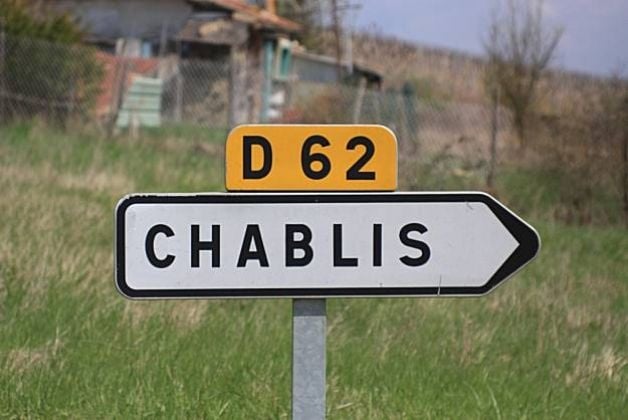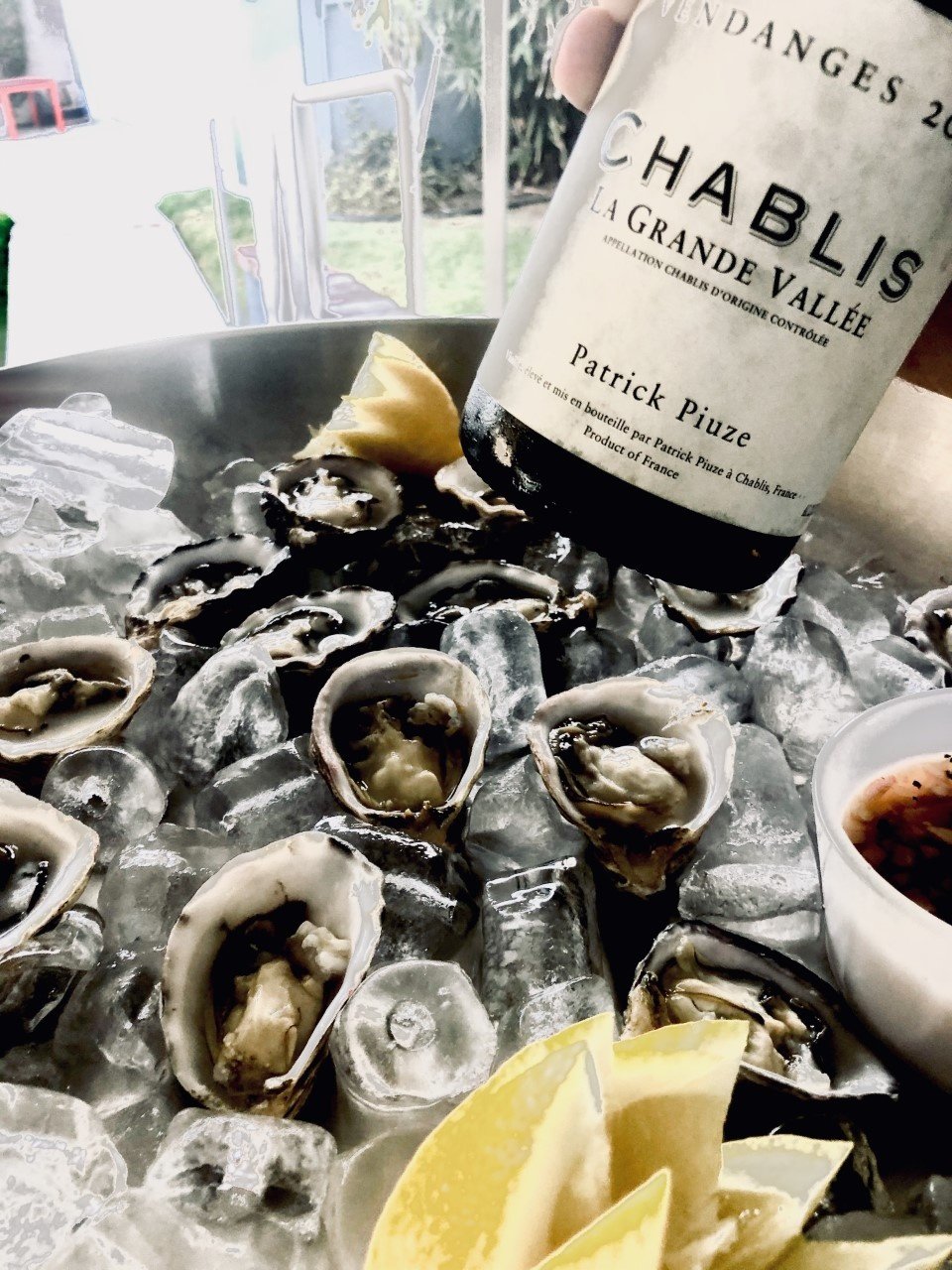WHAT IS WHITE BURGUNDY, AND WHY IS IT SO ALLURING?
The day before Valentine’s Day this year, an older gentleman brought a bottle of Puligny Montrachet to the front counter. He told Samantha he was buying this legendary white wine for his wife of 72 years.
“We met each other in second grade. I like giving her surprises.”
Samantha told me he looked happy. And why not? He was giving his bride a wine from the small, picturesque Burgundy region known for producing the world’s most elegant, refined, gorgeous and highly respected dry white wines in the world.
Yes, white wine is grown in Burgundy. A good deal of it. Some affordable, and a few priced like a home mortgage payment in a ritzy neighborhood. But nearly all of it is made from Chardonnay, where the grape was born and where it excels beyond all others.
We use the term “White Burgundy” to distinguish it from the majestic Pinot Noirs of Burgundy, but since Americans have been subjected to jugs of generic California wine called “Burgundy,” it doesn’t surprise us that some wine consumers might deduce that “white” burgundy might be a cousin to “white” Zinfandel and dismiss it as a beginner’s wine.
No, no, no. And Corona beer doesn’t cause Corona virus either. Follow me now.
The most prized dry white wines in the world are grown in Burgundy, with placenames that relate to their region (Bourgogne, Mâcon) or even more prestigious, their village: Meursault, Puligny-Montrachet, Chassagne-Montrachet, Pouilly-Fuissé, and a whole lot more. These white wines are made from Chardonnay with few exceptions.

Located in central eastern France between Champagne to the north and Beaujolais to the south, Burgundy is a where rather than a what. Following European tradition, you may see the French name Bourgogne on the label, telling you the red, white or bubbly wine in the bottle comes from that place. Or you may see our older gentleman’s Valentine wine “Puligny Montrachet” on the label, perhaps with a vaunted vineyard name. What they all have in common is that the place the grapes come from is on the label, and the wine inside is Chardonnay, with very few exceptions.

Chablis is the Chardonnay region at the northernmost part of Burgundy, a limestone-rich place made up of ancient sea creatures. Here, Chardonnay imparts a distinctive almost saline character that makes the wine superb with seafood and shellfish, particularly. Makes sense, doesn’t it? Soil from the sea nurturing wine for your seafood.

Then about sixty miles to the southeast is the start of the Côte d’Or—the Golden Slope—where the high-priced zip codes reside. The northern section—the Côte de Nuits--is primarily red wine country, but some fine white wines are made here. But it is further south in the Côte de Beaunes where you will find the Chardonnays of legend, the Grand Crus and the Premier Crus of white Burgundy.
Starting with the magnificent limestone-rich vineyard Corton Charlemagne and the rare surprisingly pleasurable whites of Savigny-les-Beaune, then moving south of the city of Beaune to the luxurious wines from Meursault, Puligny-Montrachet, Chassagne-Montrachet, Saint Aubin, and Saint Romain, you will have traversed the inspiration of the world’s finest Chardonnay producers, their North Star.
Perhaps it is the richness of the texture of these wines that makes them so alluring. The way white Burgundy rolls along the tongue, its minerality and spice tantalizing your taste buds. It certainly is found in the finish, supplying satisfying flavors long after you've swallowed them. They are arguably the most sensuous white wines in the world.
SEARCH HERE FOR OUR CURRENT SELECTION OF WHITE BURGUNDIES
Admittedly, the world knows and loves these wines, and demand has made the most famous of them out of reach for most of us, although there are hidden bargains throughout if you know where to look.
Continuing south of the Côte d’Or are two other Burgundy regions that specialize in white wine, the Chalonnaise, clustered around the city of Chalon, and the Mâconnaise, likewise adjacent to the city of Mâcon. The white wines in both regions are generally less expensive than the whites of the Côte d’Or, and for the most part are charming, useful wines that sometimes rise to great heights, but more often provide more modest and immediate pleasures.
Beginning in the north of the Chalonnaise is the town of Bouzeron, which history and lobbying created its own appellation dedicated not to Chardonnay, but to the white Aligoté, a Burgundian grape once dismissed as the “poor man’s Chardonnay”, but in the right place, grown by the right hands, can make compelling, if tangier wines. Aubert de Villaine, co-owner of Domaine de la Romanée-Conti, lives in Bouzeron where he produces red and white Bourgognes and others, but is best known for the Aligoté grown in his estate in Bouzeron.
South of Bouzeron, still in the Chalonnaise, we are back in Chardonnay-dominated country, with villages of Mercurey, Montagny and Rully where some pretty impressive Premier Cru and village whites are produced, many at more affordable prices than found in the Cote d'Or.
Finally, further south, we arrive in the Mâconnais, where one of the most famous Burgundian white wines—Pouilly-Fuissé—is grown. Once a staple of pre-California Chardonnay wine lists, it was a perfect accompaniment to classics like Sole Meunier and Halibut Almandine, and was a sure bet to impress a date or an important client.
There are more white Burgundies to discover in the Mâconnais from Saint-Veran and some of the villages of the region that bear the name Mâcon. Some of the most impressive examples are made from Les Heritières de Comte Lafon, and if you are lucky enough to discover them, treat yourself to their surprisingly accomplished wines. They are my first choice for a juicy roast chicken.

Any time you encounter a white Burgundy, you are in for an interesting, and often wonderful experience, whether from Chablis, Puligny-Montrachet, or Mâcon.
And if you ever get a chance to attend a tasting of white Burgundy, do yourself a favor and join in. You will discover wines that are not only historic in pedigree, but have a very good possibility of opening you up to a whole new world of wine exploration and satisfaction.












